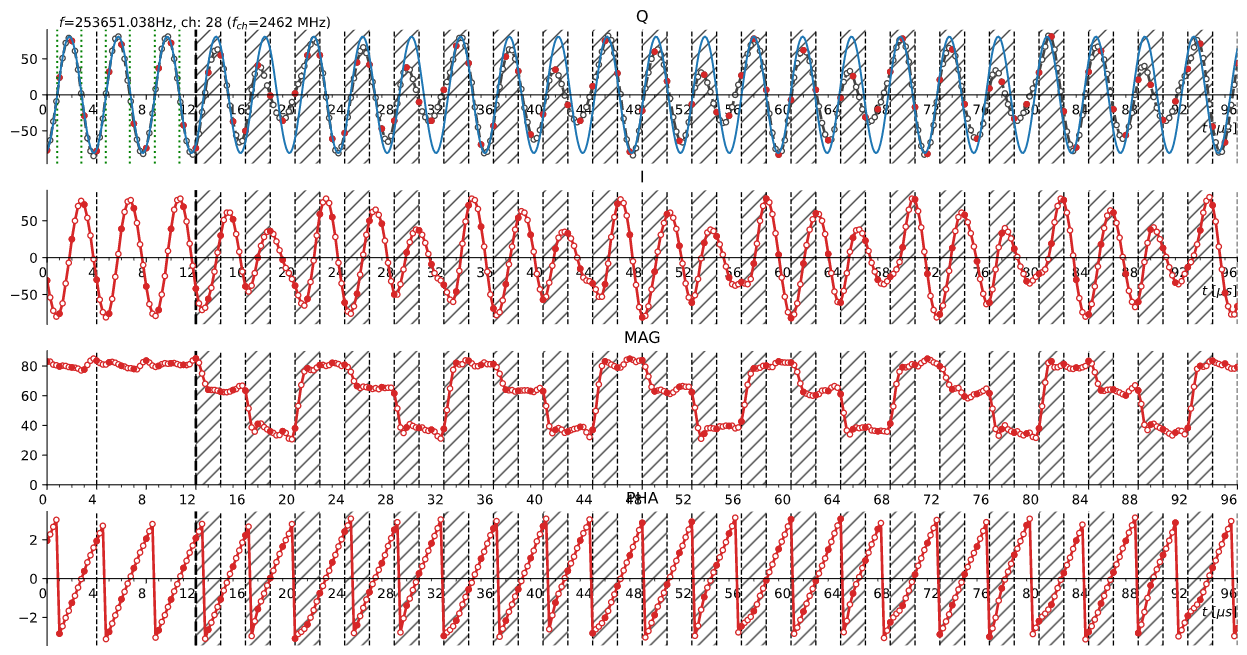Part Number: BOOSTXL-AOA
Hello,
Currently, we have BOOSTXL-AOA and several CC26X2R1 DKs, simplelink_cc13x2_26x2_sdk_5_10_00_48 SDK. We obtained a patched RTLS UI software that does not crash with UI errors. The software with default settings can connect to the master/CTE receiver. It can synchronise with periodic advertisements from CTE transmitters, and it can receive CT. However, the results (i.e. angles) are a bit unpredictable not only for connection-less mode but also for the connection-oriented mode. This behaviour does not correspond with our expectations and demo presented here: https://training.ti.com/tida-01632-automotive-bluetooth-low-energy-receiver-reference-design
In connection-oriented mode, the angle rarely goes below 0 degrees, it is unstable and it seems that it does not reflect the relative position between transmitter and receiver.
We analysed the RAW data, and it seems that the sampling works correctly. There is a considerable drop in received signal strength when using a different antenna from the array, but this corresponds with a note provided in TI's documentation.
The questions are
a) Is our goal achievable with the TI solution? I.e. a quite reliable angle calculation for direction finding using two CTE devices in connection-less mode with two antennas? Our scenario should match exactly TIDA-01632.
b) Is the provided algorithm (either in RTLS UI or SDK) able to calculate the angle correctly given the setup mentioned above?
c) Is the connection-less mode fully supported in RTLS UI?
d) Is the connection-less mode fully supported in SDK?
e) If we let manufacture TIDA-01632 PCB, will this demo be working with already available SDK? Is it possible to obtain the sources presented in the video for TIDA-01632?
Example of RAW data when 0 degree angle should be reported:


